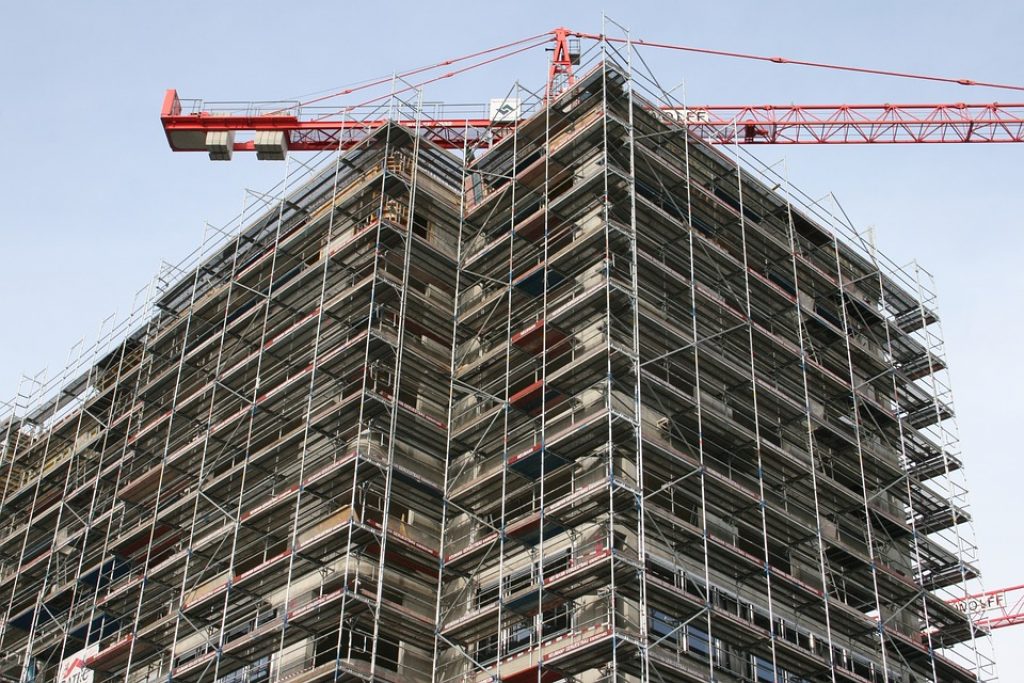When it comes to repairs, improvements or initiatives from the ground up selecting the building materials can determine a project’s method and efficiency heavily. From the base materials to the material of preference to strengthen a wall, ceiling or roof, we break down the five common building materials found on site along with their benefits because a professional contractor and designer understands that picking the right building material involves improving and increasing the building’s existence.
Table of Contents
Stone

Aesthetically appealing, the stone is a common choice of material for floors and walls. Stone quality renders it flexible, from a smooth finish to a textured one-stone can come in many different colors as well. The stone used in construction includes granite, marble, and sandstone.
It is a highly expensive choice of material, depending on the purpose and use of the stone. When it comes to marble countertops, the quality, color and make of the countertops may increase costs and the time to create them.
Steel

To date, steel has been one of the most frequently used materials in construction, from a building’s skeleton to the actual materials found within it. Even protective control panels are made of steel and can be used frequently in commercial and industrial spaces. Steel offers many advantages, without risking its strength and durability, for one it can bend or be manipulated. For places where strong winds are felt or vulnerable to earthquakes, steel structures are able to withstand the trembling through its toughness and plasticity in away.
One weakness of steel as a building material or indeed any substance is that it is highly susceptible to heat breakdown. It is not fire-resistant, and it starts to lose its strength and durability at a certain heat point, depending on the steel thickness and can crumble or crack.
Concrete

Concrete, or as contractors and builders know better, reinforced concrete is made of steel which makes it very strong. Typically used in a building’s structure and foundation once applied it will take several hours to settle and harden. Beton comes in various forms when it comes to construction, comparable to many building materials such as entry doors, walls, and paints. Including high performance to lightweight concrete and water-resistant, a builder should recognize which concrete is the best to use on a project and suggest.
Wood

For thousands of years, building material has been used. From the structural support to the foundation, where construction and architecting are concerned, wood has a rich and vibrant history. Wood is one of the most natural materials, not to mention one which can be cost-effective. While some may not think of it as a solid building material, it is strong and durable. It is a building material that is flexible in all senses-from having it bent and healed, wood can be molded to suit the structure and shape of a building.
What makes wood a popular and famous commodity apart from its industry durability, it is an aesthetically appealing material which is extremely environmentally sustainable. Whether it’s steel, marble or aluminum, if not esthetically but also mechanically wood plays well with other products. Using wood for a frame, add an access panel to it–whether it’s an HVAC, soundproof or a valve box, whatever the need or intent, wood can be quickly supported and improved in versatility.
Glass

To someone who is unfamiliar in architecture, glass is intended simply to be used for walls, but glass is a building material that is both flexible and underestimated. Obsidian was one of the most common types of glass used for its aesthetic appeal and intensity. Considered a luxury in the construction industry, because creating it requires both skill and resources.
Glass can be used in architecture as a form of façades from windows to walls and beams and floors-which would take extraordinary strength and durability. These characteristics include simplicity, intensity, and workability when it comes to the properties of this particular building material. Just as many building materials come with different purposes and styles, the glass comes in different shapes and textures as well.
Combining Materials to Finish the Job
When it comes to building, it is the use of various materials and goods that can enhance and strengthen the finished job. From the frame to the floor, no job is complete let alone a triumph without taking advantage of different materials such as timber, steel, and concrete and combining both. Take the access panels, for example, access panels are a mix of functions such as a door and window that generated what we recognize as the screen. The components that make up the access panel are also a mixture of metal as well as insulation thereby improving its function and flexibility.
